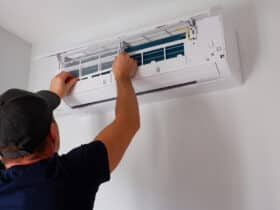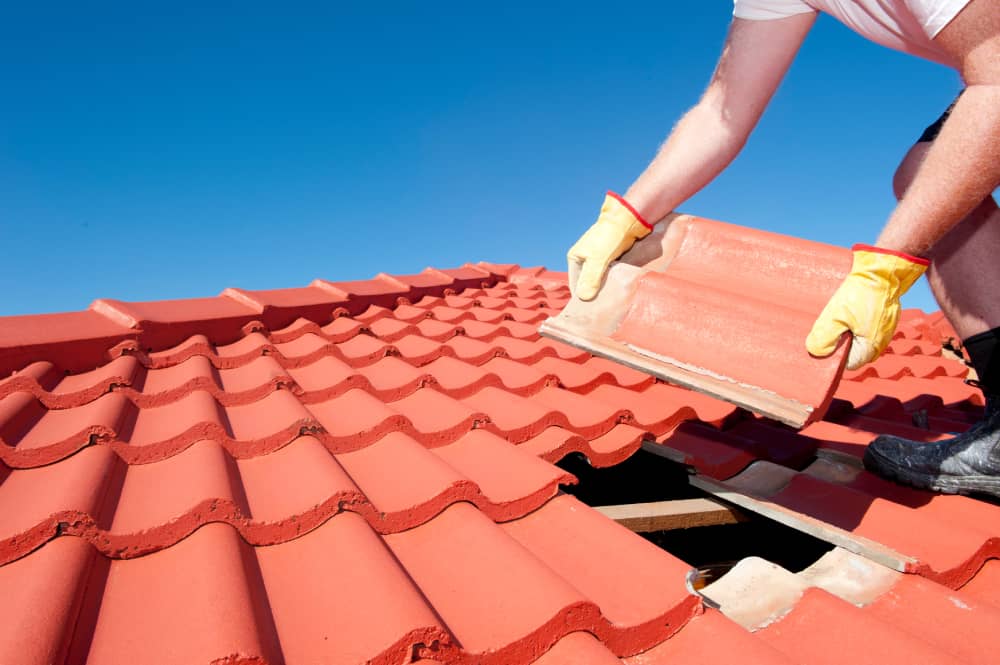If your roof is older than 25 years, it may be time to start considering a replacement. A new roof is a big investment, but it’s also an important one. Your roof protects your home from the elements, so you want to make sure it’s in good condition. Here are a few things you need to know before replacing your roof:
Signs That It’s Time for a New Roof
It’s important to keep an eye on your roof and know when it’s time for a replacement. Replacing your roof can be a big investment, but it’s much better than letting your home fall into disrepair. Here are a few signs that it might be time for a new roof:
- Your roof is more than 25 years old: Most roofs only last about 20 to 30 years, so if yours is getting up there in age, it might be time for a replacement.
- You see signs of roof leaks or water damage: If you notice any water stains on your ceiling or walls, it’s a sign that your roof is leaking and needs to be replaced.
- Your shingles are curling or cracked: If you see that your shingles are starting to curl or crack, it means they’re no longer providing adequate protection for your home.
If you notice any of these signs, it’s time to call a professional to get an estimate for a new roof.
Get Estimates From Roofing Contractors
The roof replacement cost can vary based on several factors. When you are ready to have a new roof installed, it is important to get estimates from several different roofing contractors. This will give you the opportunity to compare prices and find the best deal.
While you want to save money, it is also important to make sure that you are getting a quality product. Some things to look for when choosing a roofing contractor include:
- Reviews from previous customers
- A warranty on labor and materials
- A reputation for providing good customer service.
Once you have chosen a contractor, be sure to get everything in writing before work begins. This will help to avoid any misunderstandings later on.
Choose the Right Roofing Material
When it comes to roofing, there are many different materials to choose from. Asphalt shingles are the most popular choice for residential homes. The benefits of asphalt roofs include:
- Affordable for any budget
- Easy to install
- Easy to maintain
- Available in a variety of colors
Metal roofing is also a popular choice, and it has several advantages over asphalt. Metal roofs are more durable and long-lasting, and they’re also more energy-efficient. They reflect heat away from the home in summer, helping to keep the house cooler. In winter, they help to trap heat inside, resulting in lower heating bills. Additionally, it is easy to clean roof stains on metal roofs. Metal roofs are also recyclable, making them a more sustainable choice.
Tile roofs are also a popular choice, particularly in warmer climates. Tile roofs are very durable and can last for decades. They’re also energy-efficient and easy to maintain. One downside of tile roofs is that they can be expensive, but they may be worth the investment if you live in an area with a lot of sun and heat.
If you plan to install solar panels, it is best to go with an asphalt shingle roof. Tile and metal roofs are sometimes compatible with solar panels, but it is best to check with your contractor to be sure.
Schedule the Replacement
The first step in scheduling a roof replacement is to determine when the project will take place. In most cases, it is best to wait until the spring or summer when weather conditions are more favorable.
There are some exceptions to this rule. For example, if your roof sustained damage during a severe storm, it may be necessary to schedule the replacement sooner. Once you have determined when the replacement will take place, the next step is to choose a contractor. As we mentioned, be sure to get bids from multiple contractors and compare their prices and qualifications.
Once you have selected a contractor, they will work with you to schedule a time for the project. It is important to keep in mind that a roof replacement is a major project that can take several days to complete. As such, it is important to plan accordingly and make sure that there will be no disruptions during the project.
Deal With Insurance Paperwork
One of the most important aspects of roofing is dealing with insurance paperwork. In the event of severe weather, it is crucial to have the proper documentation in order to file a claim.
Many insurance companies will not honor claims unless they have been submitted within a certain timeframe. It is important to be familiar with the requirements of your particular policy.
You will need to provide the insurance company with a detailed estimate of the damage, as well as photographs or video footage. It is also a good idea to keep records of all previous repairs or maintenance work that has been done on your roof.
Hopefully, your roof installation will go smoothly and you won’t have to deal with any insurance claims. Nevertheless, it is critical that you are prepared for anything that may happen.
Clean Up After the Roof Replacement Is Completed
Once the roof replacement is complete, it’s important to clean up any debris that may have accumulated on your property. This includes removing any old shingles, nails, or other materials that were used in the roofing process.
It’s also a good idea to power wash your gutters and downspouts to remove any dirt or grime that may have built up. Be sure to sweep away any loose gravel or stones from around the perimeter of your home.
Endnote
Replacing your roof is a big project, but it’s one that is well worth the effort. By following these simple tips, you can ensure that the process goes smoothly and that your new roof will provide years of protection for your home.











